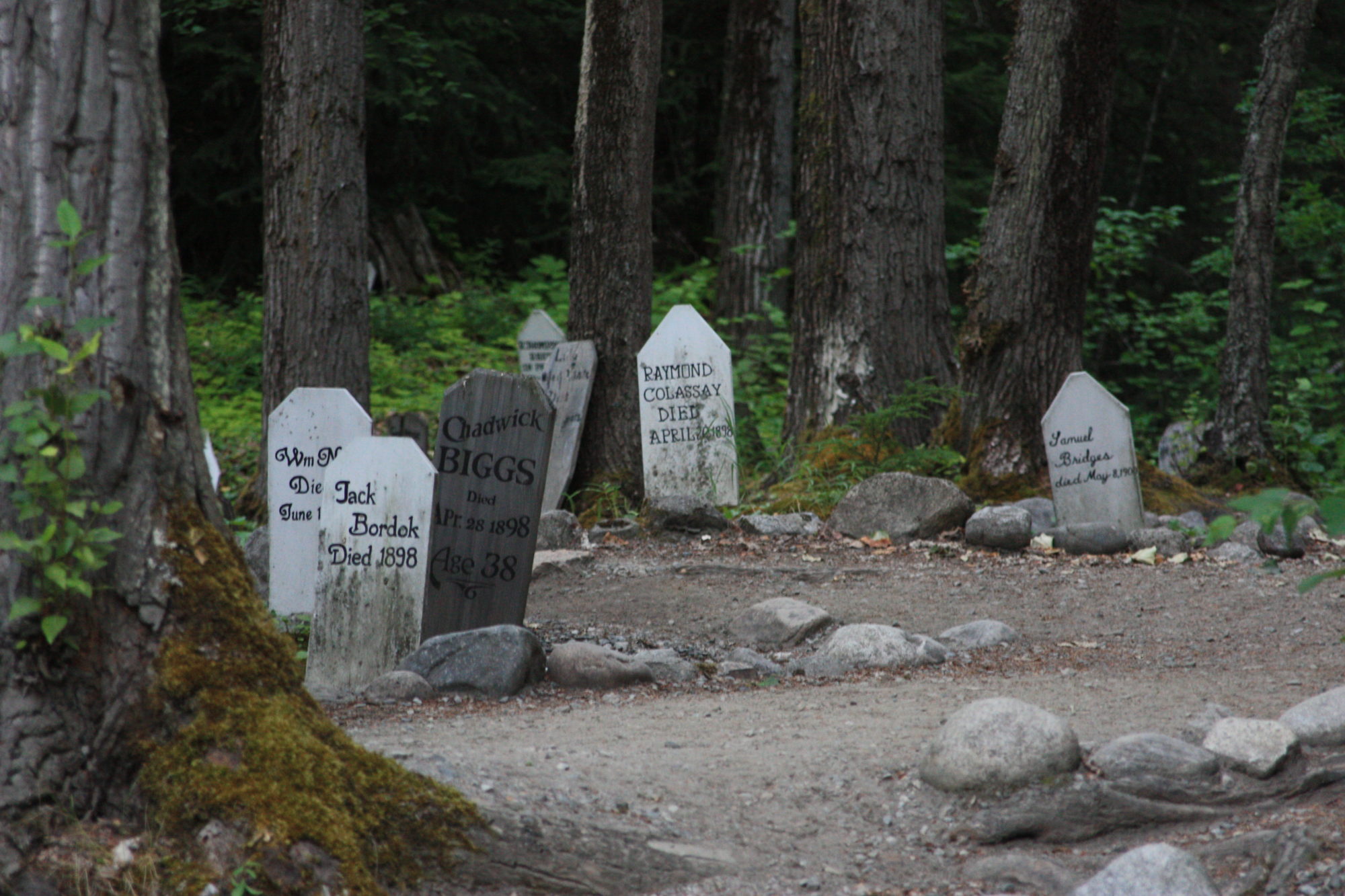
Kaa Goox was a Canadian Tagish/Tlingit First Nation member of the wolf clan, born in 1866. His wife was Sadusge Annie. He was one of the co-discoverers of gold that led to the Klondike Gold Rush in the Yukon. He was the nephew of Skookum Jim Mason. He staked one of the first three claims in the Klondike, along with his uncle and George Carmack. Kate Carmack was his aunt. Storyteller Angela Sidney was a niece.
Pierre Berton incorrectly called him Tagish Charlie in his book.
He died December 26, 1908 in Carcross when he fell off the bridge and drowned. He was only 42 years old. Seen above is his monument in the Carcross Cemetery.









